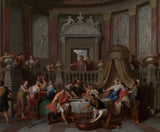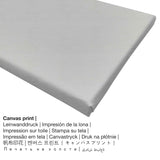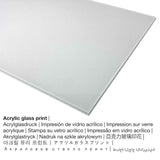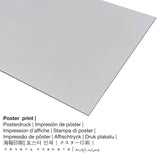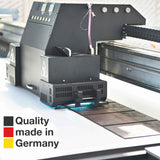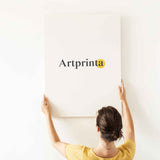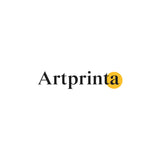Gerard Hoet, 1700 - oriri nke Cleopatra - ọmarịcha nka
Ụtụ gụnyere. Mbupu gbakọrọ na ndenye ọpụpụ.
Nkọwa nke edemede
In 1700 Gerard Hoet painted this work of art. The original version had the following size: 57,8 × 69,5 cm (22 3/4 × 27 3/8 na) and was painted with the medium oil on canvas. Furthermore, this work of art can be viewed in in the digital art collection of Ụlọ ihe ngosi nka nke J. Paul Getty. We are happy to state that the public domain masterpiece is being provided with courtesy of Ụlọ ihe ngosi nka nke J. Paul Getty.Ebe E Si Nweta nke ihe osise:. Ọzọkwa, alignment bụ odida obodo ma nwee oke nke 1.2: 1, nke pụtara na ogologo bụ 20% ogologo karịa obosara.
Ngwa ngwaahịa dị
Maka ngwaahịa ọ bụla anyị na-enye ụdị nha & ihe dị iche iche. Ka ị kwekọọ n'ihe ị chọrọ nke ọma, ị nwere ike họrọ n'ime nhọrọ nhazi ngwaahịa ndị a:
- Mpempe akwụkwọ ederede (akwa akwa akwa): Our poster print is a UV printed flat canvas paper with a fine surface texture, which resembles the actual version of the artwork. A print poster is qualified for framing your art replica using a personal frame. Please note, that depending on the absolute size of the canvas poster print we add a white margin of approximately 2-6cm round about the painting in order to facilitate the framing with your custom frame.
- Mbipụta kwaaji: A printed canvas, not to be mistaken with a canvas painting, is an image printed onto cotton canvas. Also, a canvas print generates a lively and positive atmosphere. The advantage of canvas prints is that they are relatively low in weight, which implies that it is quite simple to hang your Canvas print without the help of additional wall-mounts. Therefore, a canvas print is suitable for all kinds of walls.
- Mbipụta aluminom (aluminium dibbond): These are metal prints on aluminium dibond material with a true depth. The non-reflective surface make a fashionable look. A direct Direct Print on Aluminum Dibond is your excellent introduction to art replicas produced with aluminum. For your Aluminium Dibond print, we print the chosen artpiece on the aluminium composite white-primed surface. The colors of the print are luminous and vivid, the fine details are crisp and clear.
- Mbipụta iko acrylic (nke nwere ezigbo mkpuchi iko): An acrylic glass print, which is sometimes denoted as a UV print on plexiglass, will transform your favorite original work of art into lovely home décor and offers a good alternative option to dibond or canvas fine art replicas. The major advantage of a plexiglass fine art print is that contrasts and painting details become more recognizeable because of the subtle gradation of the picture.
Nkwupụta iwu: We do everythig possible in order to describe the art products in as much detail as it is possible and to display them visually in our shop. However, the colors of the print products and the printing may diverge to a certain extent from the presentation on your screen. Depending on the settings of your screen and the nature of the surface, not all color pigments are printed one hundret percent realistically. Because the art prints are processed and printed by hand, there may also be slight deviations in the motif's size and exact position.
Nkọwa akụkọ ahaziri ahazi
| Bipụta ụdị ngwaahịa: | nka nka |
| Usoro mmeputakwa: | dijitalụ mmeputakwa |
| Usoro mmepụta: | mbipụta dijitalụ |
| Production: | German mmepụta |
| Ụdị ngwaahịa: | mmepụta ihe na-achọ |
| Ojiji ngwaahịa: | nka mgbidi, ime ụlọ |
| Nhazi onyonyo: | usoro odida obodo |
| Ụdị anya: | 1.2: 1 |
| Oke onyonyo pụtara: | ogologo bụ 20% ogologo karịa obosara |
| Ihe mmeputakwa dị: | mbipụta ọla (aluminium dibond), mbipụta akwụkwọ mmado (akwụkwọ kwaaji), mbipụta kanvas, mbipụta iko acrylic (nwere ezigbo mkpuchi iko) |
| Mbipụta kanvas (akwa akwa na etiti ihe ndọtị) dị iche iche: | 60x50cm - 24x20", 120x100cm - 47x39", 180x150cm - 71x59" |
| Acrylic glass print (nwere ezigbo mkpuchi iko) nhọrọ: | 60x50cm - 24x20", 120x100cm - 47x39" |
| Mpempe akwụkwọ mmado (akwụkwọ kwaaji) nha dị iche iche: | 60x50cm - 24x20", 120x100cm - 47x39" |
| Ụdị nha ebipụta aluminom: | 60x50cm - 24x20", 120x100cm - 47x39" |
| Nhazi mbipụta nka: | mmeputakwa na-enweghị isi |
Data ndabere gbasara nka pụrụ iche
| Aha nke eserese ahụ: | "The Banquet of Cleopatra" |
| Nhazi: | sere |
| Otu sara mbara: | nka ochie |
| Time: | 18th narị afọ |
| Ekepụtara: | 1700 |
| Afọ nka: | ihe karịrị afọ 320 |
| Ihe osise izizi: | mmanụ na kwaaji |
| Akụkụ nke nka nka izizi: | 57,8 × 69,5 cm (22 3/4 × 27 3/8 na) |
| Egosiputara na: | Ụlọ ihe ngosi nka nke J. Paul Getty |
| Ebe ngosi nka: | Los Angeles, California, Njikota Obodo Amerika |
| Weebụsaịtị nke ihe ngosi nka: | Ụlọ ihe ngosi nka nke J. Paul Getty |
| Ụdị nka nka: | ngalaba ọha |
| Site n'aka: | Ụlọ ihe ngosi nka nke J. Paul Getty |
Ihe omuma ihe nka
| Aha onye nka: | Gerard Hoet |
| Gender: | nwoke |
| Ọrụ nke onye na-ese ihe: | onye na-ese ihe |
| Nkewa onye nka: | nna ukwu ochie |
© Nchekwa ikike nwebisiinka - www.artprinta.com (Artprinta)
Nkọwapụta nka sitere na ihe ngosi nka (© - nke J. Paul Getty Museum dere - www.getty.edu)
Seated under a canopy at the lavish banquet that she is hosting for Marc Antony, Cleopatra holds a glass of wine into which she is about to place a priceless pearl earring as an ostentatious sign of her indifference to wealth. The pearl dissolves in the wine, which she then drinks to Antony's health. In return, he presents her with Cyprus, Phoenicia, Coele-Syria, and parts of Arabia. Since the late sixteenth century, newly available translations of the Life of Marc Antony had led to the rediscovery across Europe of the legend of the beautiful, brilliant, and powerful Cleopatra. Her story soon became a popular subject for plays and paintings.
Gerard Hoet set his historical subject from the first century B.C. in a lavish late Baroque interior. Three versions of the Banquet of Cleopatra by the artist survive, all of which show his imaginative architectural settings and careful rendering of rich clothes and accessories. Hoet's works typify the classicizing style of Dutch academic art around 1700.

